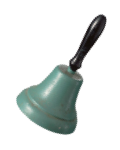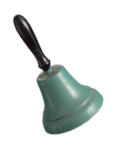Bicycle registration carried on till 1982, when it was abolished due to the inconvenience and time-consuming chore of embossing bicycle numbers on its frame. However, owners faced greater risk of getting their bicycles stolen after the registration policy was abolished. With the increase in wealth and the emergence of comfier and safer modes of transportation such as cars, bicycles were thus increasingly used for recreational purposes and short distance travels.
Today, apart from postage services that have been using bicycles for deliveries, bicycles are used as an affordable and accessible alternative to motorised vehicles by delivery riders inspired to take up the role in the wake of a rise in delivery services during the pandemic. Unlike motor vehicles, bicycle users can avoid the hassle of bidding on the increasing prices of Certificate of Entitlement (COE), the vehicle quota system implemented since 1990, and other maintenance and miscellaneous fees. Bicycles are used more commonly for work and also for short distances to main transportation hubs such as train and bus interchanges.
People have also taken to the roads with the emergence of road cycling as a recreational activity. Bicycle races and competitions are also popular in the Singapore scene, with the first Tour de France criterium race in South-east Asia hosted by Singapore in 2022. Extension of pedestrian pathways to accommodate bicycle lanes, and the construction of bicycling trails around Singapore’s scenic and green spaces has further encouraged Singaporeans to engage in bicycling activities.
While bicycles might have retreated to the recreational sphere, it has always been a transportation tool cherished for its simplicity and its ability to get us to places where we need be.
Bibliography
“A TWO WHEELED STEED. [ARTICLE],” The Straits Times, p. 3, September 4, 1869, https://eresources.nlb.gov.sg/newspapers/Digitised/Article/straitstimes18690904-1.2.18
Allen, John. “Sheldon Brown's Bicycle Glossary,” Harris cyclery, last updated 25 January 2023, https://www.sheldonbrown.com/gloss_sa-o.html#safety
“Bicycle.” National Heritage Board, https://www.roots.gov.sg/Collection-Landing/listing/1151615.
“Bicycle Licence,” SG101, last updated 19 Jan 2023, https://www.sg101.gov.sg/history/singapores-first/bicycle-licence.
“Bicycles need not be registered from now,” The Straits Times, p. 6, February 18, 1982, https://eresources.nlb.gov.sg/newspapers/Digitised/Article/straitstimes19820218-1.2.33
Buang bin Haji Siraj, interview by Ong Lean Kim, November 11, 1986, interview 000715, transcript, Communities of Singapore (Part 3), National Archives Singapore, Singapore, https://www.nas.gov.sg/archivesonline/oral_history_interviews/record-details/8e9c716b-115f-11e3-83d5-0050568939ad
Chia Weng Soon (Trustee/Vice Chairman of Kong Chow Wui Koon), interview with author, Singapore, March 2, 2023.
Eric Charles Pemberton Paglar, interview by Low Lay Leng, September 13, 1983, interview 000299, transcript, Japanese Occupation of Singapore, National Archives Singapore, Singapore, https://www.nas.gov.sg/archivesonline/oral_history_interviews/record-details/4edec7b3-115f-11e3-83d5-0050568939ad.
“E.T. Bikes Are Prime Target for Thieves.” The Straits Times. December 6, 1983, https://eresources.nlb.gov.sg/newspapers/Digitised/Article/straitstimes19831206-1.2.33.7
“E.T. cycle fad worries police,” The Straits Times, p. 7, April 14, 1983, https://eresources.nlb.gov.sg/newspapers/Digitised/Article/straitstimes19830414-1.2.27
“E.T. expected to be top money maker this year,” The Straits Times, p. 8, October 10, 1982, https://eresources.nlb.gov.sg/newspapers/Digitised/Article/straitstimes19821010-1.2.114.17.4
“Fault not with 'E.T.' bikes,” Singapore Monitor, 2nd ed., p. 2, May 16, 1983, https://eresources.nlb.gov.sg/newspapers/Digitised/Article/singmonitor19830516-2.2.6.5
Koh, Puay Ping and Wong Yiik Diew, “The Evolution of Cycling in Singapore,” Journeys 9, (2012): 39-41.
“Kong Chow Wui Koon Acrobatic Cycling Troupe,” National Heritage Board, https://www.roots.gov.sg/stories-landing/stories/the-acrobatic-cycling-troupe/the-acrobatic-cycling-troupe.
Lee, David. “Cycling: Singapore to host first Tour de France criterium race in South-east Asia,” The Straits Times, June 28, 2022, Sport, https://www.straitstimes.com/sport/cycling-tour-de-france-to-stage-criterium-race-in-singapore-on-oct-29-30.
“Page 1 Advertisements Column 1.” Kabar Ucapan Baru. April 15, 1928, https://eresources.nlb.gov.sg/newspapers/Digitised/Article/kabarucapan19280415-1.2.2.1
“Page 1 Advertisements Column 3.” Mid-Day Herald. January 9, 1895, https://eresources.nlb.gov.sg/newspapers/Digitised/Article/middayherald18950109-1.2.2.3
“Page 130/131 Advertisements Column 2.” Straits Times Annual. January 1, 1954, https://eresources.nlb.gov.sg/newspapers/Digitised/Article/stannual19540101-1.2.78.2
“Page 15 Advertisements Column 2.” Sunday Standard. February 18, 1951, https://eresources.nlb.gov.sg/newspapers/Digitised/Article/sundaystandard19510218-1.2.89.2
“Page 2 Advertisements Column 2.” Indian Daily Mail. August 6, 1952, https://eresources.nlb.gov.sg/newspapers/Digitised/Article/indiandailymail19520806-1.2.37.2
“Page 22 Advertisements Column 1.” Sunday Tribune. July 8, 1934, https://eresources.nlb.gov.sg/newspapers/Digitised/Article/sundaytribune19340708-1.2.154.1
Rover Safety Bicycle. Photograph. Roots. Singapore, n.d. National Museum of Singapore. https://www.roots.gov.sg/Collection-Landing/listing/1151615.
“Singapore bicycle plate,” Roots, National Heritage Board, last updated 03 April 2021, https://www.roots.gov.sg/Collection-Landing/listing/1316501.
Sutherland, Duncan. “Walter Makepeace,” Singapore Infopedia, National Library Board, last updated 2009, https://eresources.nlb.gov.sg/infopedia/articles/SIP_1583_2009-10-10.html.
“The quota system at a glance,” Straits Times (Overseas ed), p. 3, March 3, 1990, https://eresources.nlb.gov.sg/newspapers/Digitised/Article/stoverseas19900303-1.2.6.5
THE STRAITS OBSERVER. Friday, 10th September, 1875. [ARTICLE],” Straits Observer, p. 2, September 10, 1875, https://eresources.nlb.gov.sg/newspapers/Digitised/Article/straitsobserver18750910-1.2.4
“The unfamiliar shape of bicycles to come,” The Straits Times, p. 12, May 23, 1983, http://eresources.nlb.gov.sg/newspapers/Digitised/Article/straitstimes19830523-1.2.52.2


